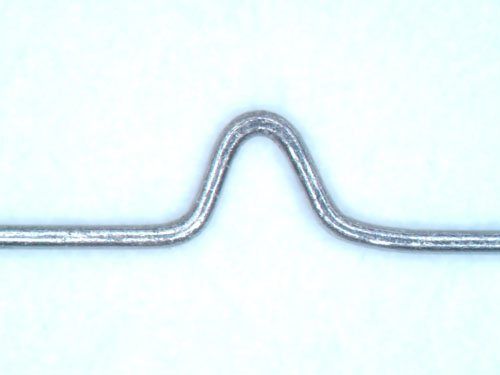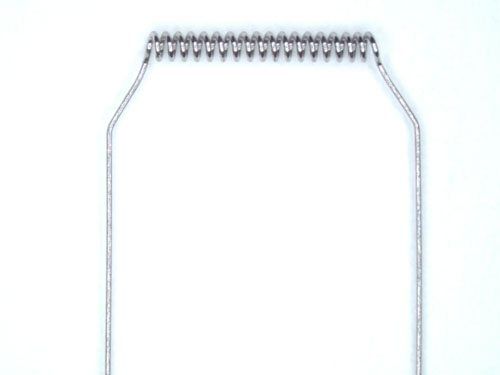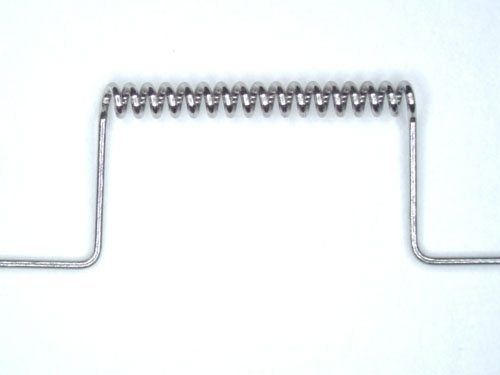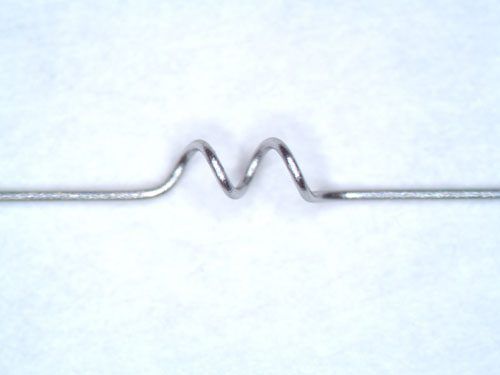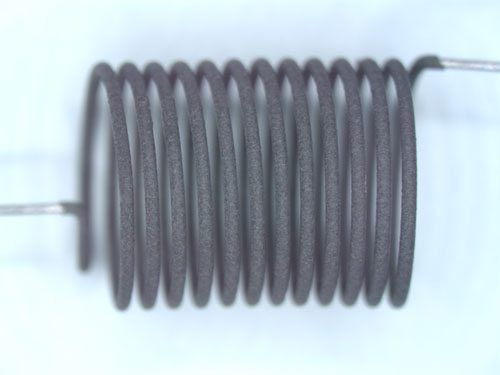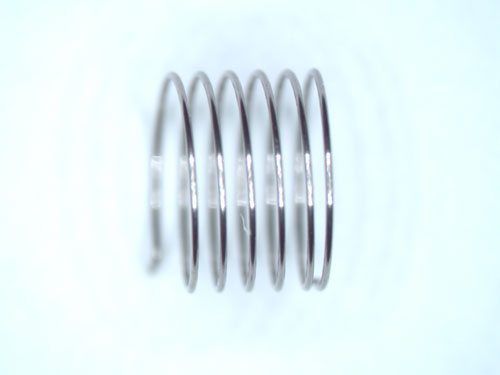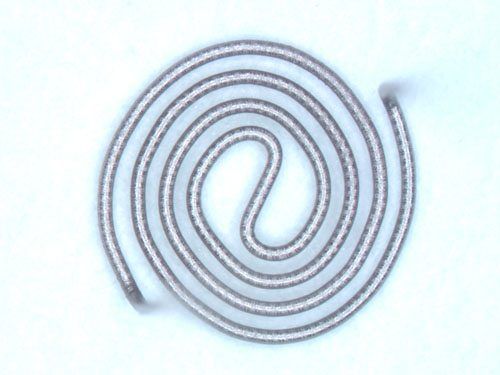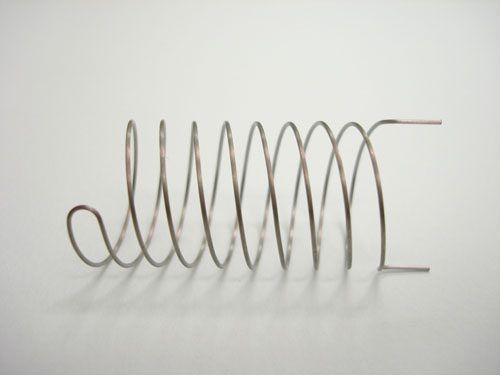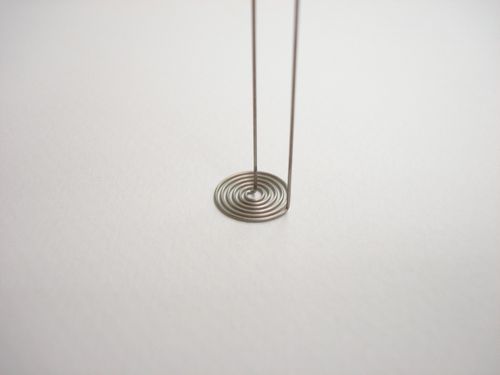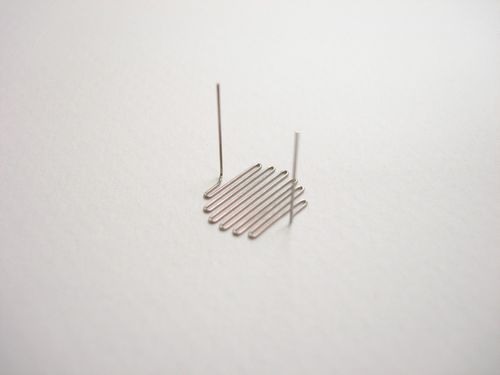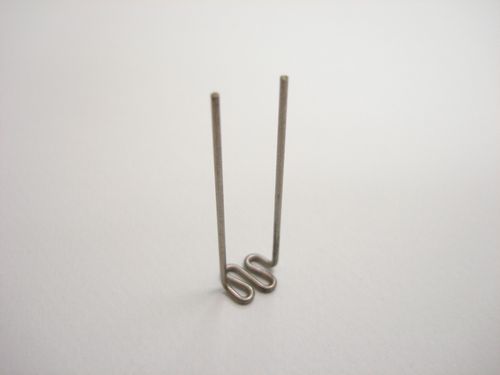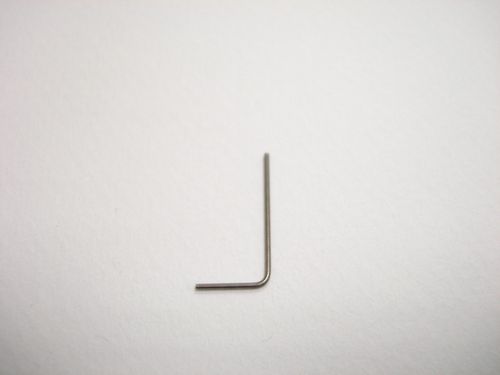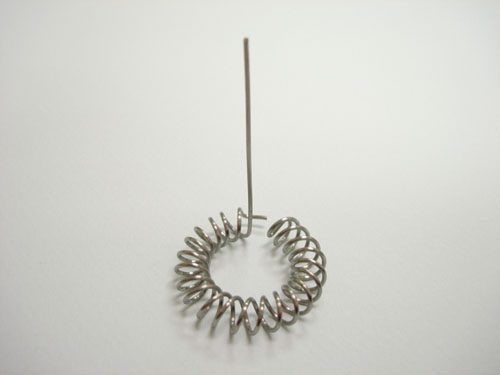About Non-Sag Doped Tungsten Wire
Non-sag doped tungsten has been an integral sag resistant wire material for decades. The addition of aluminum, silicon, and potassium enhances the non-sag properties of tungsten wire, even in very high temperatures. These elements are added to the tungsten blue oxide by using an aqueous solution of potassium disilicate, aluminum nitrate or aluminum chloride. It is then followed by a reduction of the doped blue oxide.
The majority of the additives are removed by evaporation during direct sintering, but despite the high vapor pressure of potassium during this process, it is still possible to retain 60-100ppm of metallic potassium in the form of partly filled bubbles. The non-sag properties in the final wire are achieved by the interlocking grain structure.
It is widely accepted that this interlocking structure can only be achieved when there is a sufficiently high degree of deformation. During this crucial step, the potassium filled bubbles in the sintered mold elongate along the wire axis. The deformation causes the rows of elongated potassium bubbles to split into rows of smaller bubbles. Therefore, a refinement of the initial potassium distribution can be achieved. The degree of deformation, temperature, and intermediate annealing steps all help determine the total number of bubbles.
Properties of Non-Sag Doped Tungsten Wire
Here at Union City Filament, we utilize potassium-doped tungsten for a variety of our electron emitter and free-standing heater products because of its superior characteristics. Some of these include:
· Increased shape stability (compared to pure tungsten)
Shape stability is used to describe the resistance towards deformation of the electron source filament (cathode) or heater. Without this resistance, filament sag would lead to undesired changes in the electron beam and/or focal spot, and heater sag would lead to an inefficient fit within the cathode assembly. The high shape stability of the potassium doped tungsten is most probably caused by the interaction with potassium bubbles and the related dislocations, which are induced by the thermal stresses.
· Recrystallization behavior
By increasing the potassium doped material’s degree of deformation, the temperature for recrystallization increases. This is best explained by the continuous refinement of the potassium bubble distribution.
Uses of Non-Sag Doped Tungsten Wire
With its sag resistance and excellent coiling properties at room temperature, non-sag doped tungsten is commonly known for being used as wire material in medical x-ray tube filaments, scientific instrument filaments and various microwave tube heaters like those used in magnetrons and klystrons. Besides these traditional applications, non-sag doped tungsten can also be used in the manufacture of high-temperature springs, surgical devices and ion source filaments.
Non-Sag Doped Tungsten Filament Design
Regardless of your end application, the experts at Union City Filament can help you by designing the best filament or heater to suit your needs. Since 1950, we have been perfecting our processes for winding and forming tungsten, molybdenum, rhenium, and their alloys so that they hold the tightest possible tolerances on dimensions and uniformity. For more information on how we can help your company, please do not hesitate to contact us today.
Regardless of what your end application is, Union City Filament’s expert engineers will work with you to design the best filament or heater to suit your needs.
Questions? Contact us today for help.
